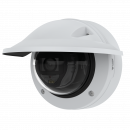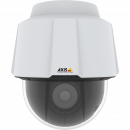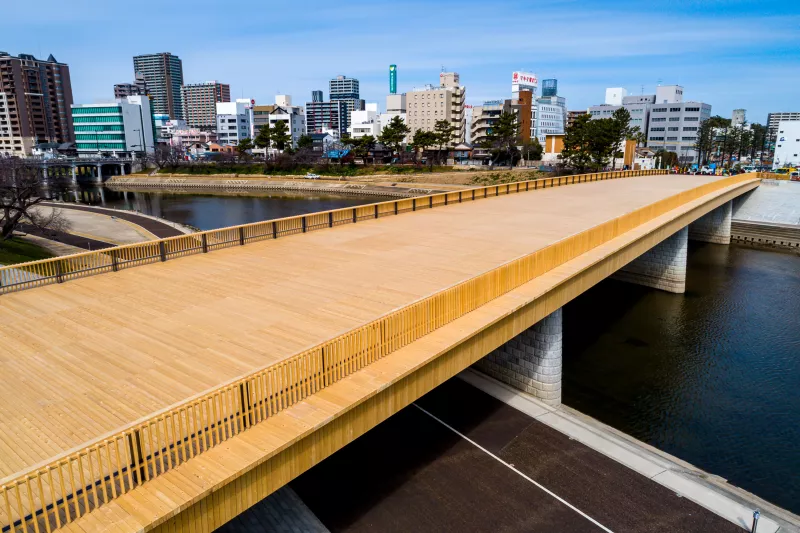
Using outdoor people counting to support Okazaki’s walkable city center concept.
Prospect of future use for multiple applications as a “Smart City Model Project”.
Mission
Okazaki City is known as the birthplace of Tokugawa Ieyasu, as well as for its long history and the beauty of its natural environment. The promotion of a walkable city center, predicated on being able to move around the city on foot to enjoy its abundant resources, is an important element of its urban planning. This led to the initiation of a project to understand changes in people flows, and furthermore to establish how to incentivize behavior to change people flows. Previously there had been almost no examples of camera-based people counting being used outdoors, and in order to be able to guarantee the accuracy of the footage at night and in other conditions, a trial project was needed.
Solution
First, four AXIS Q1615 Mk II Network Cameras were installed at each exit of Higashi-Okazaki railway station, and people counting commenced using the FieldAnalyst application from NEC Solution Innovators, Ltd. In the shopping district, AXIS Q3518 fixed dome cameras were used to enable the provision of images to support more accurate analysis, and these are equipped with multiview streaming to allow them to be used for crime prevention in the future. For the footbridge, it was necessary to place one camera at each end of the bridge in order to get an accurate picture of pedestrian traffic, and the installation of AXIS P5655-E PTZ cameras made it possible to obtain precise counts of pedestrians, even at a distance and at night.
Result
The 21 cameras installed around the station, in the shopping district, along the pedestrian path and on the footbridge, provided a foundation for obtaining data on people counts for the major locations within the city center. During periods when people were being asked to refrain from going out due to the coronavirus crisis, the data obtained was utilized to understand the results of self-restraint in going out, and at the city hall it led to many employees coming to the office later in the day so as to distribute working hours. Going forward, the plan for the cameras is to used not only for people counting, but also for multiple other applications such as monitoring and crime prevention.
We have been able to acquire data at the same precision outside as we do inside, which is satisfying. By implementing people counting, we have been able to quantitatively measure the results of urban planning on public investment. We are utilizing this as part of a more advanced approach to urban planning, such as by presenting this data in our conversations with private-sector businesses to interest more people in investing in this district.
System installation and related details
Okazaki City’s central “Otokawa Riverfront District,” which surrounds Okazaki Castle, is famed for its long history and the beauty of its natural environment. The city’s urban planning incorporates the concept of a walkable city that allows pedestrians to wander through this historic district, and it has made public investments to promote this idea. In addition, retail outlets are being opened in order to revitalize the shopping district so as to encourage privatesector investment, and the city is also eyeing measures aimed at redevelopment.
“I feel that we need to put in place public facilities, and leverage the resulting new flows of people to attract future investment from private-sector businesses, so as create an attractive urban environment. I have come to think that the way to achieve this is to obtain and share evidence-based information, such as the number of people passing, the times at which they pass, and other attributes” says Masayuki Suzuki of the Policy Planning Division, part of the General Policy Department at Okazaki City Hall.
It was this idea that led to the concept of Smart Cities, and which led in turn to collaboration with NEC Corporation (NEC) and Axis Communications, which have established a track record in acquiring and analyzing data that provides support for this approach.
The first catalyst for this redevelopment was the installation in 2019 of pedestrian decking that enabled foot traffic to be drawn smoothly from HigashiOkazaki station to key areas. Next, because the river that flows through the center of the city divides the flow of people, and presents an obstacle to achieving a walkable city that is enjoyable for pedestrians, a footbridge with no access for vehicles was constructed from one bank of the river to the other in 2020.
To ensure that this public investment was effective, and to obtain data that would be useful in revitalizing the city center, the decision was made to implement people counting based on video footage. There have been many successful cases of people counting in an indoor environment, but in Japan there had been few demonstrations of it being used in an outdoor setting. Accordingly, this was selected as a Smart City Model Project by the Ministry of Land, Infrastructure, Transport and Tourism for two years running, in 2019 and 2020.
“In the first year we were just trying to get it up and running, while in the second year we put the emphasis on implementing the installation. I think people have given us high marks as a local government for committing to a vision of utilizing data in urban planning, and for integrating the installation of facilities with permanent urban systems, says Masayuki Suzuki.
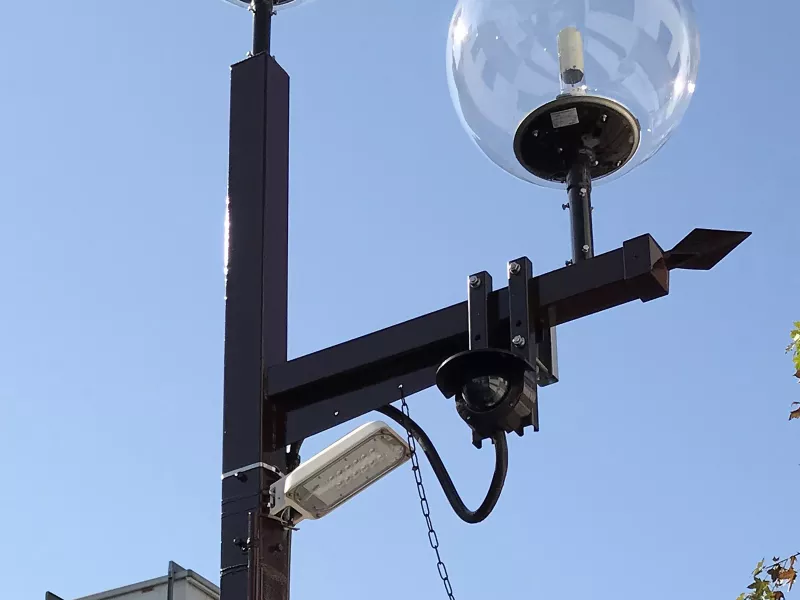
Having built a track record since the first AXIS Q1615 Mk II cameras were installed on the pedestrian decking, the system has subsequently been expanded to the shopping district and to the central pedestrian path that is currently under construction. In the shopping district, the need to analyze information such as the attributes of passers-by led to the installation of AXIS Q3518 fixed-dome cameras, which are capable of providing 4K images in an outdoor environment. This enabled the use of the zoom function to analyze details even when the camera was covering the a wide area in its entirety
Each of the cameras is sited at an elevated location, such as a streetlight, with a box containing a PC close at hand. Because the analysis of the images taken outdoors is conducted locally, there is no requirement to store the images acquired, and only the resulting data is sent to the cloud.
The issue was how to obtain as accurate an understanding as possible of the number of people passing, using a camera at each of the north and south ends of the bridge, while covering a walkway 16m wide. When the images are taken in close-up the image becomes narrower, and there were concerns about accuracy when using images taken from a distance. After reviewing the issue from various angles, the device selected to meet the requirement of a camera that was able to maintain accuracy even at long distances was the P5655-E PTZ with optical zoom functionality.
One key point was the Lightfinder 2.0 technology it incorporates, which provides high-resolution images even in the dark and enables accurate people counting even at night. For locations without special requirements, the AXIS P3245-LVE fixed-dome camera was selected for its balance of functions. These were evaluated in advance to enable the best option to be chosen, but when they were actually installed on site, some confusion did occur.
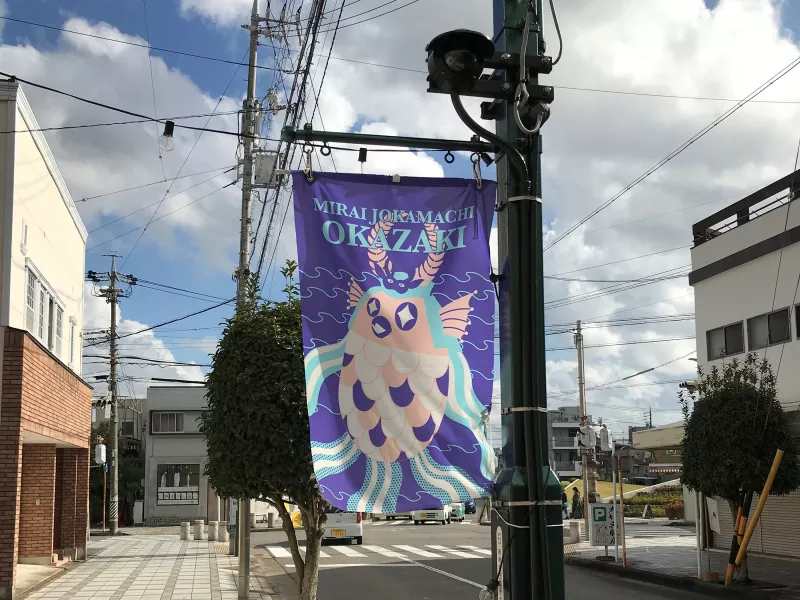
Some aspects were not fully understood until they were attempted for the first time, such as discovering the times of day at which the images were easier or harder to read, adjusting the targeted field of view in order to acquire images from a point approximately 3m above the bridge and the walkway, and performing calibration with the FieldAnalyst software. “Fortunately the cameras themselves were easy to use, so despite the lack of experience in some areas, with strong on-site support from the Axis team, the deployment was completed successfully,” notes Masaya Okamoto of NEC Solution Innovators, Ltd., who led this system installation.
Currently, the data acquired and analyzed is being shared with such stakeholders as the city hall, those involved in events, developers, and private-sector businesses considering a retail presence in the area. The breadth of parties involved requires a mechanism that enables data to be collated flexibly in response to demand, and further progress is expected to be made as a result of collaboration with NEC.
“By combining the data we have acquired with other technologies such as infrared and GPS, I believe we can enhance its value further. Our goal is an approach to implementing urban planning that understands flows of people over both wide and narrow areas, as required, and puts this data to good use,” says Masayuki Suzuki.
To enable people to enjoy the city safely and comfortably, the future use of cameras not only for people counting but also for other applications such as monitoring and crime prevention is being considered. The intent is to continue to push forward as a Smart City Model Project, with the help and cooperation of the Japanese government.
Products & solutions

